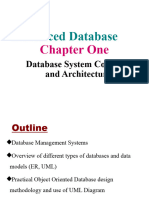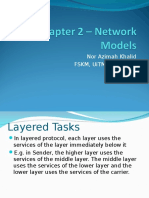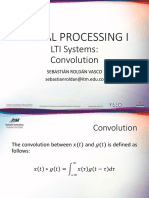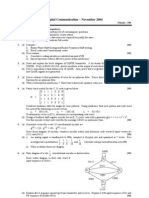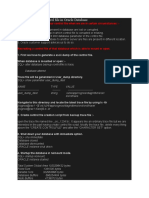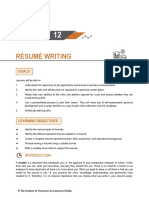0% found this document useful (0 votes)
30 views27 pagesLecture-1 Introduction To Database - Databeses Overview
Here are some potential case studies students could explore:
- Facebook: Uses NoSQL databases like Cassandra and HBase to store user profiles, posts, messages etc at massive scale.
- Amazon: Uses a combination of RDBMS and NoSQL databases. RDBMS for order and transaction processing, NoSQL for product data and reviews.
- Google Maps: Uses PostgreSQL with PostGIS extension to store location and map data for geospatial queries and rendering maps.
- LinkedIn: Uses RDBMS, NoSQL and search technologies. RDBMS for profiles and connections. NoSQL for feeds and analytics.
- Twitter: Uses MySQL clusters for user profiles and tweets. NoSQL for scaling ingestion
Uploaded by
sesaza52Copyright
© © All Rights Reserved
We take content rights seriously. If you suspect this is your content, claim it here.
Available Formats
Download as PPTX, PDF, TXT or read online on Scribd
0% found this document useful (0 votes)
30 views27 pagesLecture-1 Introduction To Database - Databeses Overview
Here are some potential case studies students could explore:
- Facebook: Uses NoSQL databases like Cassandra and HBase to store user profiles, posts, messages etc at massive scale.
- Amazon: Uses a combination of RDBMS and NoSQL databases. RDBMS for order and transaction processing, NoSQL for product data and reviews.
- Google Maps: Uses PostgreSQL with PostGIS extension to store location and map data for geospatial queries and rendering maps.
- LinkedIn: Uses RDBMS, NoSQL and search technologies. RDBMS for profiles and connections. NoSQL for feeds and analytics.
- Twitter: Uses MySQL clusters for user profiles and tweets. NoSQL for scaling ingestion
Uploaded by
sesaza52Copyright
© © All Rights Reserved
We take content rights seriously. If you suspect this is your content, claim it here.
Available Formats
Download as PPTX, PDF, TXT or read online on Scribd
/ 27

















































